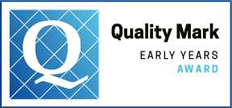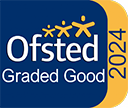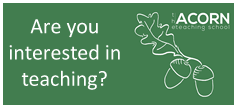Core Books, Reading and Phonics
Willow Nursery Core Books, Reading and Phonics
At Willow Nursery School we realise how important books and reading are so that our children become confident and capable readers. We believe that children’s language and imaginative skills are developed through their knowledge of nursery rhymes and engagement with high quality reading books. We have a wide range of books available in all areas of the school for the children to enjoy. We have an outdoor library available for all children and their families to choose a book or two to take home to read and share.
We have developed the use of ‘core books’, to further support the children in their reading development. Our core books have been carefully chosen for their simple repetitive, predictable text and often feature rhyme. These features make it easier for children to join in with so that the experience of reading quickly becomes interactive and the children begin to learn the story as they share the book. We use the same ‘core books’ throughout the school with our oldest and youngest children.
We have also selected books that foster the children’s interests and help them to gain knowledge of the world around them. Children are quick to have their favourite books and soon become confident early readers, able to recite stories word for word or creatively re-telling the story using their own words.
| Term | Theme | Core Books | |
| Autumn Term 1 | Me, My Family and the Nursery Community | Maisy goes swimming |
|
| Happy in our Skin |
|
||
| Autumn Term 2 | Colour and Light | Brown Bear, Brown Bear what do you see? | |
| Winnie the Witch | |||
| Spring Term 1 | Traditional Tales & Rhymes | Goldilocks and the Three Bears | |
| The Three Little Pigs | |||
| Spring Term 2 | People who help us | The Tiger who came to tea |
|
| We’re Going on a Bear Hunt | |||
| Summer Term 1 | Growth and Change | Handa’s Surprise | |
| The Very Hungry Caterpillar | |||
| Summer Term 2 | On the Move | Julia Donaldson book – The smartest Giant in town | |
| Peace at Last
|
Phonics
We follow Letter and Sounds as the basis for our phonics curriculum.
Phase One is the main area of our focus, developing children’s speaking and listening skills, helping them to attune to the sounds around them with a particular focus on songs, rhymes, music and attention and listening games. These activities happen during planned sessions as well as incidentally during child initiated learning. Focusing on these activities lays the foundations for the phonic work which starts in Phase Two. Phase one activities are arranged under seven aspects:
- Aspect 1: General sound discrimination – environmental sounds
- Aspect 2: General sound discrimination – instrumental sounds
- Aspect 3: General sound discrimination – body percussion
- Aspect 4: Rhythm and rhyme
- Aspect 5: Alliteration
- Aspect 6: Voice sounds
- Aspect 7: Oral blending and segmenting
Phase Two is introduced in ‘big nursery’ half way through the year. Children entering Phase Two will have experienced a wealth of listening activities, including songs, stories and rhymes. They will be able to distinguish between speech sounds and many will be able to blend and segment words orally. Some will also be able to recognise spoken words that rhyme and will be able to provide a string of rhyming words, but inability to do this does not prevent moving on to Phase Two as these speaking and listening activities continue. The purpose of this phase is to teach at least 19 letters, and move children on from oral blending and segmentation to blending and segmenting with letters. By the end of the phase many children should be able to read some VC and CVC words and to spell them either using magnetic letters or by writing the letters on paper or on whiteboards. During the phase they will be introduced to reading two-syllable words and simple captions. They will also learn to read some high-frequency ‘tricky’ words: the, to, go, no. The teaching materials in this phase suggest an order for teaching letters and provide a selection of suitable words made up of the letters as they are learned. These words are for using in the activities – practising blending for reading and segmenting for spelling. This is not a list to be worked through slavishly, but to be selected from as needed for an activity. It must always be remembered that phonics is the step up to word recognition. Automatic reading of all words – decodable and tricky – is the ultimate goal.
| Letter progression (one set per week) | ||||
| Set 1 | s | a | t | p |
| Set 2 | i | n | m | d |
| Set 3 | g | o | c | k |
| Set 4 | ck | e | u | r |
| Set 5 | h | b | F,ff | L,ll |



